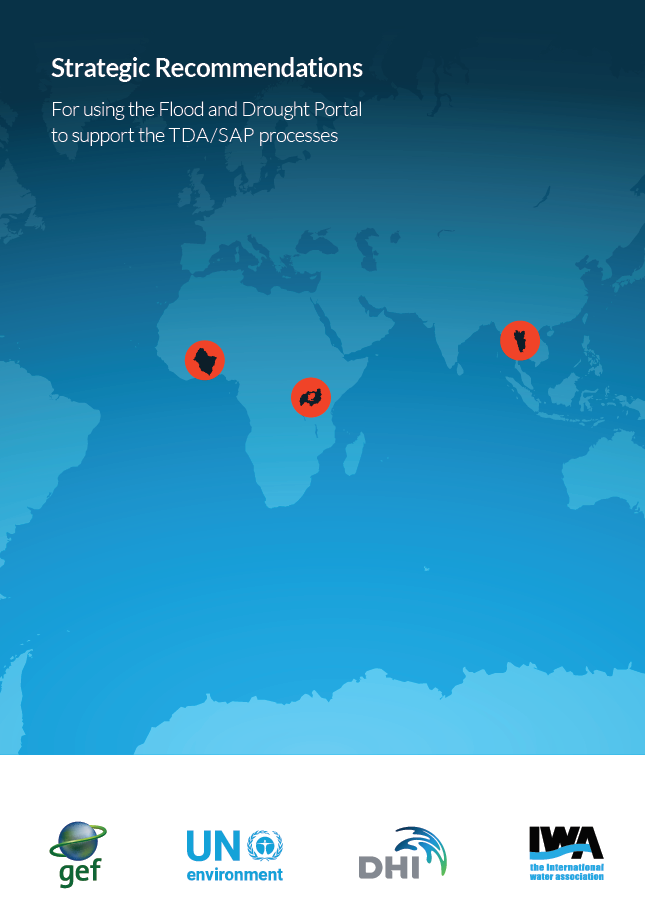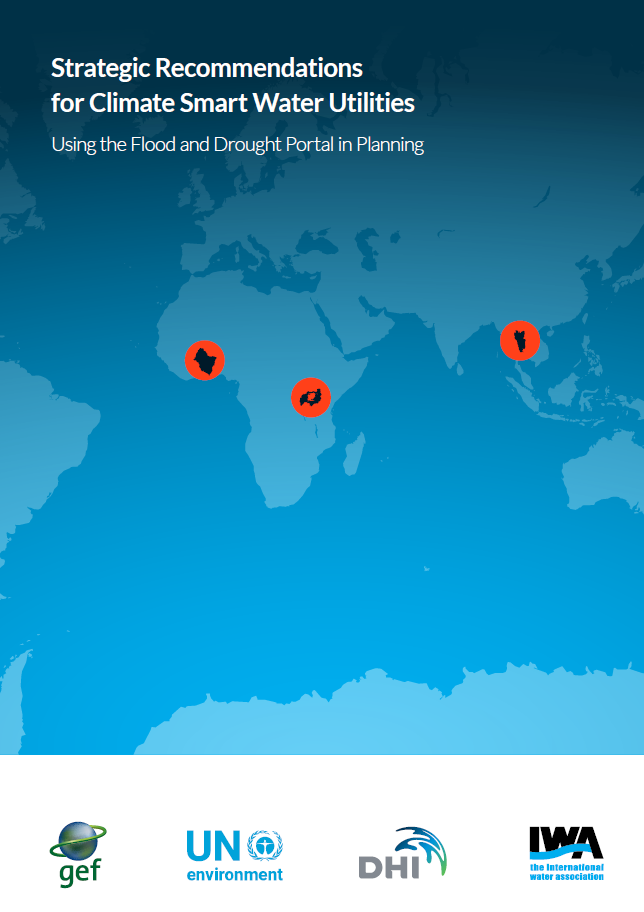Strategic recommendations
|
The Flood and Drought Management Tools (FDMT) project, funded by the Global Environment Facility (GEF) under its International Waters (IW) portfolio, was implemented by UN Environment and jointly executed by DHI and the International Water Association (IWA) during the period 2014—2018. Its objective was to improve the ability of water managers in transboundary river basins to recognize and address the implications of the increased frequency, magnitude, and unpredictability of flood and drought events arising from climate variability and change. The planning approaches supported by the FDMT project included Transboundary Diagnostic Analysis/Strategic Action Programme (TDA/SAP), Integrated Water Resources Management (IWRM), and Water Safety Planning (WSP). The project also developed a methodology to support water utilities and basin organisations, involving web-based technical applications to share data and planning tools with stakeholders in their basins, the Flood and Drought Portal (www.flooddroughtmonitor.com). The purpose of this document is to describe the relevance/advantages of applying the FDMT applications as part of the Transboundary Diagnostic Analysis/Strategic Action Programme (TDA/SAP) processes and how this can be implemented in practice. |
|
The effect of climate change on the hydrological cycle is becoming a growing phenomenon and resulting in impacts including flood and drought events, disappearance of glaciers, decrease in groundwater recharge, and water quality degradation (e.g. oxygen depletion in water reservoirs during extreme heat events) (WHO, 2017). Such events are becoming increasingly common, more severe and less predictable with increasing climate variability and change. Stakeholders from catchment to tap have a role to play in strengthening climate resilience. Water utilities, in particular, need to have sustainable and resilient water resources management to ensure water supply continuity and to fulfil their responsibility to deliver safe and secure water to their customers. This document focuses on strategic recommendations for water utilities on:
|


